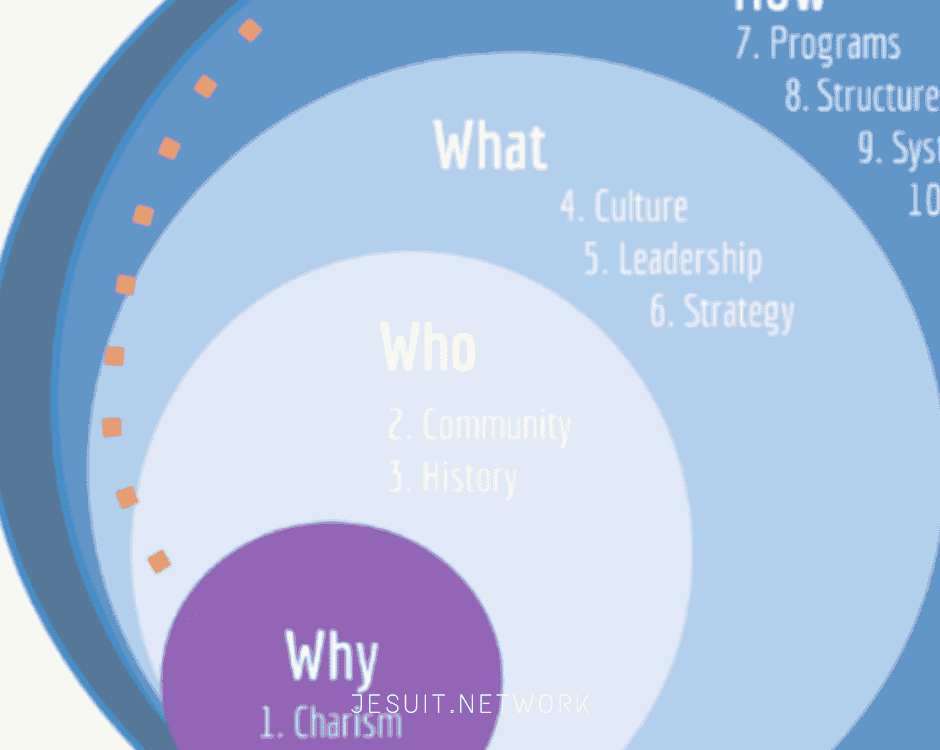This website uses cookies so that we can provide you with the best user experience possible. Cookie information is stored in your browser and performs functions such as recognising you when you return to our website and helping our team to understand which sections of the website you find most interesting and useful.
Why Networking: Greater Collaboration for the Mission
Frequently we say that one of the characteristics of modernity is pluralism. We have ceased to be a homogeneous world, and perhaps ceased to think of it as homogeneous. Today we talk about an interculturality shaping our societies.
With plurality comes a fragmentation of identities. We all wear many hats; when we change hats, our self-image changes as well. We might use a mathematical image. We are members of various sets. Some of these are subdivisions of greater wholes: I am a member of my community, of my province, of the Society of Jesus, of the Church. But we also belong to sets which are not part of one greater whole, but which overlap. Not everyone in my community is also part of the professional association to which I belong, or of my soccer team. We form our subdivisions and affiliations because they help us, and because they are useful for structuring our relationships or achieving our goals.
Traditionally in the Society, the governmental subdivisions are provinces and communities. The Assistancies are also subdivisions, but not governmental. They exist so as to facilitate the government of Fr General. The Conferences of Provincials arose for a similar purpose: to facilitate the government of Provincials. But General Congreation 35 gives them a new significance. It affirms that Conferences are not “mere instruments of interprovincial coordination.” (D. 5, 18 a) Rather, they are means by which the Provincials do apostolic planning together. They should become “structures of cooperation regarding specific inter- and supraprovincial aspects of mission” that require collective decision making.
That is the goal: greater collaboration for the mission. And this collaboration is helped by networking
This opens up the possibility of something that is often required by mission in a globalized and interconnected world: Provinces grouping in the interests of responding better to their mission. This can happen through a common agreement of the Provinces involved (for example: a house of formation in common, or the sharing of men and money), or through a territory being a joint responsibility of different Provinces (like the existing projects at the triple frontier of Chile, Peru and Bolivia, or at the frontier between Colombia and Venezuela).
It follows that we can think of other forms of subdivision within the conference: regions with common concerns as regards mission, or projects in a territory covering parts of each of the canonical Provinces involved. This is what I mean when I talk about new subdivisions: regions or territorial projects. These two possibilities are not mutually exclusive; nor are we ruling out possible fusions between provinces. All this bespeaks a great flexibility, one that is always adapted to mission.
What are the advantages of organising ourselves by region or integrating supra-provincial projects? There are many reasons, but the first and foremost, which encompasses all the others, is to be more responsive to mission. That is the goal: greater collaboration for the mission. And this collaboration is helped by organisation and networking.
Three areas can be distinguished in which the Society finds added value through collaboration among Jesuit networks:
a. For the local institutions:
- The network provides help for the weaker institutions by broadening their horizons, reinforcing their social capital, and reducing any sense of isolation they may have
- Interconnection increases the capacities of institutions without competing with their proper autonomy
- The local mission gains in universality and also in relevance
- The local institutions achieve greater visibility and importance
b. Practical advantages:
- The institutions learn from one another: best practices, methodologies, ways of proceeding
- There is easier access to relevant information
- Intersectorial collaboration is made possible around shared apostolic projects
- Networks have better access to financing agencies
c. For the apostolic body of the Society:
- Networks bring with them a new sense of being a universal body
- Networks contribute to the development of a joint strategic vision of the Society’s future
- New levels of action are discovered which allow regional or global responses to apostolic challenges
- Networks help to coordinate the efforts of different institutions on behalf of common apostolic challenges
- Networks project to the public an image of the Society’s common identity
- Networks allow for advocacy at the international level
While the first and second levels are what usually come up in discussions on networking, the third level still demands attention and reflection, focusing on how networking actually builds and enhances the apostolic body of the Society of Jesus. It is a novel proposal that requires serious discernment, but it is not to be feared: Father General himself invites us to be creative with regard to mission and to “transcend the boundaries of provincial, national and ethnic identities, underlining the universality of mission.”
This path does not go through the creation of new levels of intermediate superiors, but through agreements between provincials to assign a delegate for the common work of their provinces. In previous posts, concrete measures have been proposed, and reflection, discussion and common discernment are invited in order to arrive at actions to be implemented in this direction.
This reflection is based on an article by Jorge Cela SJ, originally published in CPAL report number 288 (2013)






2 Comments
Dear Dani, I totally agree with the view expressed in your article. One question that has been in my head in these last few years is how to form for this new approach, so that people (either jesuits and lay ignatian people) feel confortable and see the advantages of working like this. We’ve started developing some formation on ignatian leadership. Is it now time to form in ignatian networking as well :)? Many blessings, and thank you for the article.
Hey Filipe, good point. You are totally right. One of the key elements for the success of these type of structures the shared vision and common mission framework… for this we need to work on the culture level and that includes training and also co-creation. For the last few years we have been offering workshops in “network leadership” in the different levels of our apostolic works. Not sure we need training in “ignatian networking” but for sure in the new type of leadership and strategic vision that is needed to assure these structures are well settled, aligned and led for the common mission. Count on Jesuit.Network if you want to outline something like this at the CEP level in your new assignment.